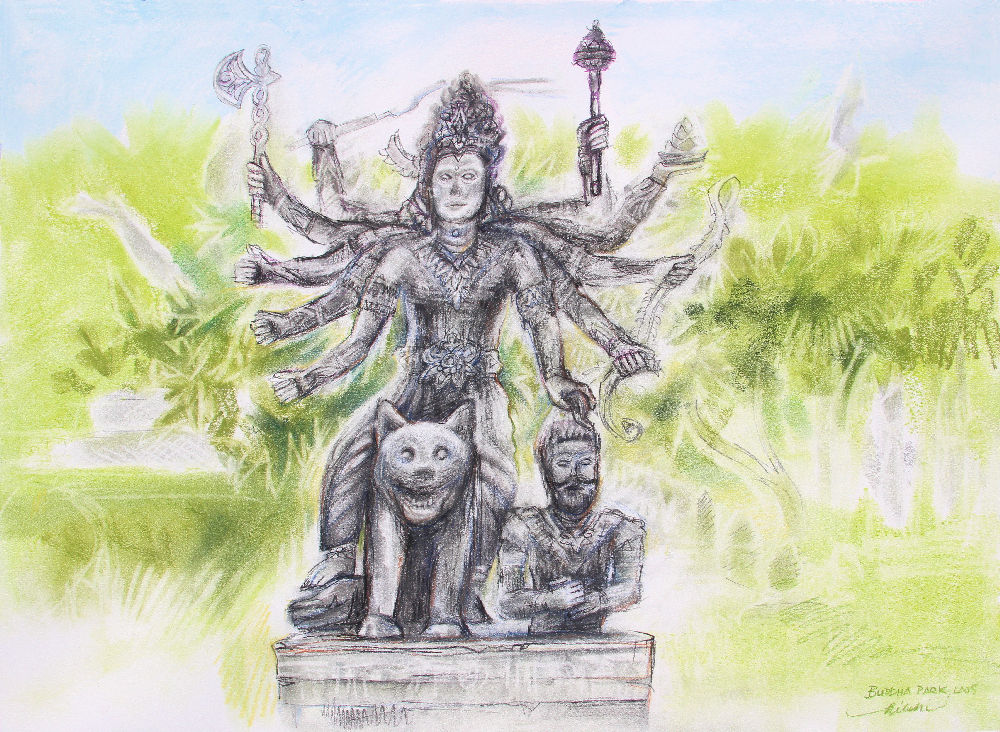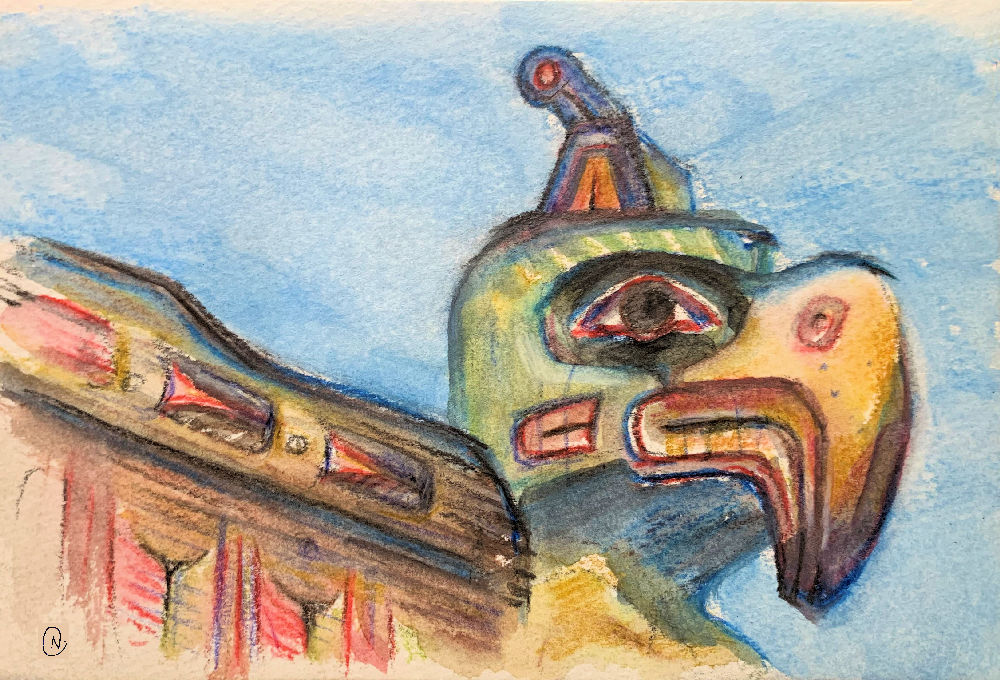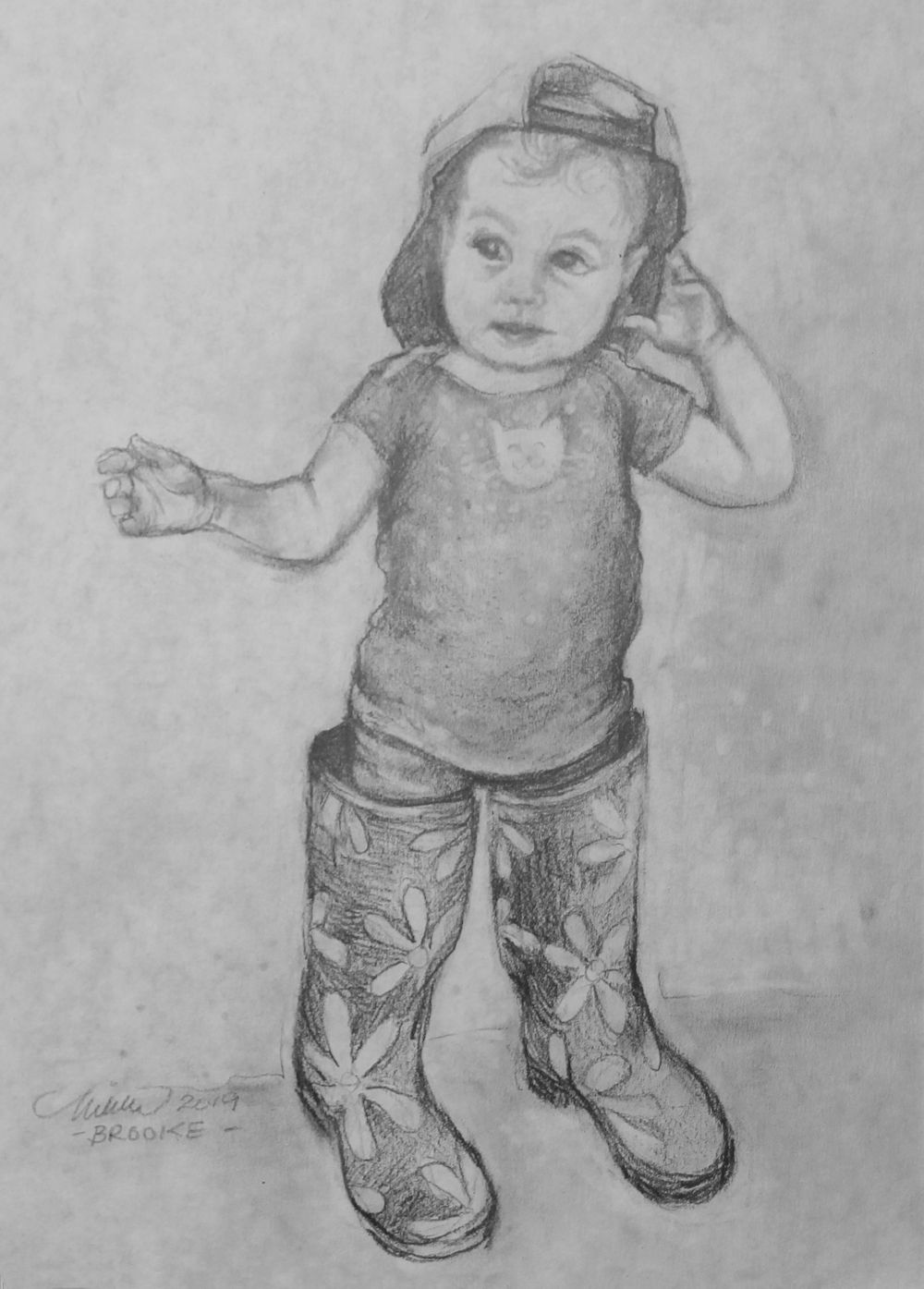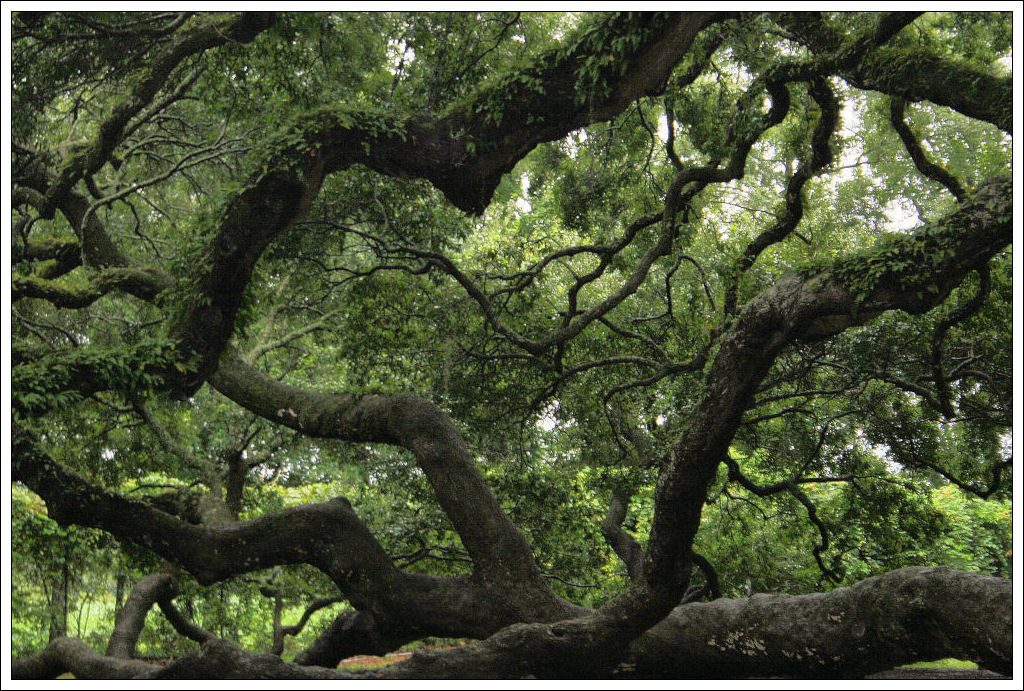series
« Previous EntriesBuddha Park, Laos
Monday, October 21st, 2024
Oct.1st: Buddha Park 01, 18H x 24W inches soft pastels on paper.
 25 km from Vientiane, Laos, Buddha Park displays over 200 large, reinforced concrete statues based on integrating stories from Hindu and Buddhist mythology, created by Luangpu Bunluea Surirat and his apprentices, started in 1958. This is the first of many representations I have planned. I was there in 2016 and took so many photos, intending to do a series of drawings much sooner than today, but couldn’t decide where to start because there are so many interesting pieces and points of view.
25 km from Vientiane, Laos, Buddha Park displays over 200 large, reinforced concrete statues based on integrating stories from Hindu and Buddhist mythology, created by Luangpu Bunluea Surirat and his apprentices, started in 1958. This is the first of many representations I have planned. I was there in 2016 and took so many photos, intending to do a series of drawings much sooner than today, but couldn’t decide where to start because there are so many interesting pieces and points of view.
Though the sculptures at first seem crudely done – for how easy can it be to manipulate concrete? – the artists have carefully rendered the grace of hands in prayer and portrayed such character in mythological gods, animals, demons, and combinations of all the above. Discovering cows grazing in the neighboring meadow as part of the setting in the far end of the park, it’s a place where the sum of its parts is so fantastic, that to dissect it in any portrayal will not do it justice. Better for you to read this link to all the information about this remarkable human achievement, than for me to only show you snippets of my impressions or try to describe it in words.
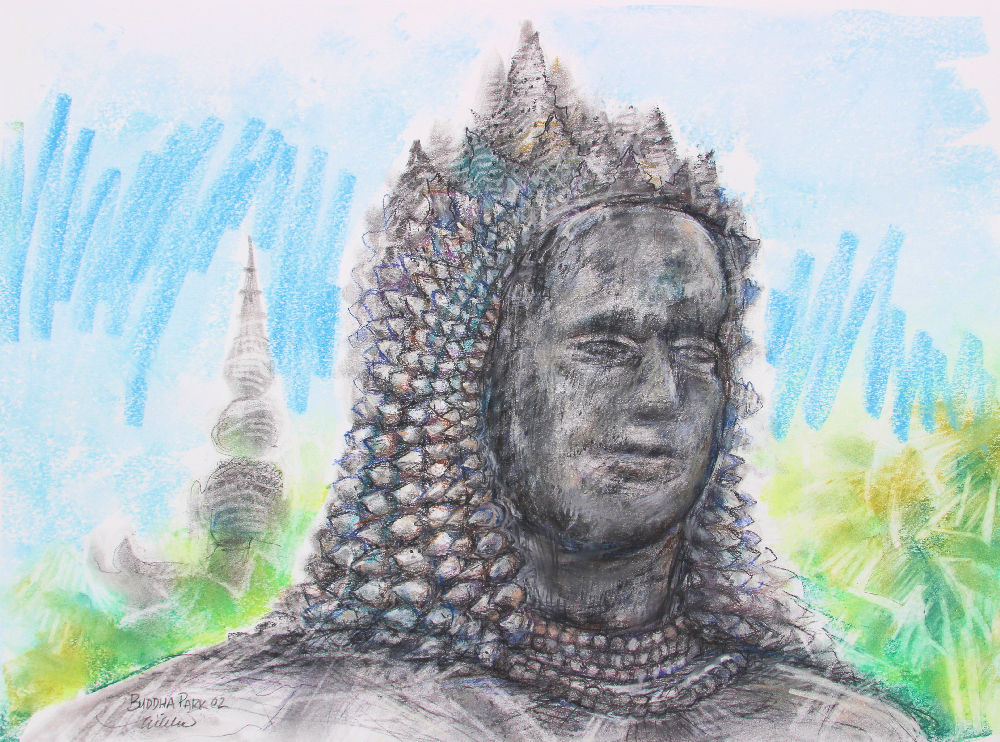
Oct. 4th: Buddha Park 02, 18H x 24W inches soft pastels on paper

Oct. 8th: Buddha Park 03 – Vishnu as Narayana with Lakshmi and Sheshanaga, 18H x 24W inches soft pastels on paper
In the simplest of terms and with limited understanding, here’s my guess at what this group represents: Vishnu with weapon and symbolic items missing, in the form of Narayana (“He who lies in the waters”), is seen lounging beside Lakshmi, his female counterpart. He is mounted on Sheshanaga, a many-headed serpentine demi-god, said to exist before the creation of the universe and will remain after its destruction.
In the complex belief system of Hinduism, literature regards gods, demi-gods and goddesses assuming many forms, with different names and aspects that change with each incarnation. The broad concepts and multi-layered symbolism are only learned by lifelong (or many lives of) awareness, devotion and practice. Brahma, Vishnu and Shiva are 3 aspects of the One Supreme Being, and are principal deities who create, protect and transform the universe.

Oct 10th: Vishnu as Varaha – Buddha Park 04, 18H x 24W inches soft pastels on paper
Oct 16th, Buddha Park 05: My best guess is that this is Durga, Hindu Goddess of war and strength, protective mother of the universe, eternally struggling with forces of good against evil. She is usually depicted riding a lion or tiger, with between eight and eighteen hands holding the various weapons and objects that are highly symbolic of her purpose.
18H x 24W inches soft pastels on paper. Work process:
Oct. 21st: Buddha Park 06, Airavata, Hindu elephant deity or also known in Thailand as Erawan with Indra. Work in progress:
 |
 |
 |
||||
| Phase 01 | Phase 02 | Phase 03 | ||||
More Postcards
Sunday, October 15th, 2023
Alder Shadows, Nimkish Lake Sunset, Stellar’s Jay, Bigleaf Maple (Port Renfrew), Creyke Point, and Mount Douglas (Victoria), 4H x 6W inches watercolor pencils on paper
 |
 |
|||
 |
 |
|||
More Postcards
Friday, October 13th, 2023

Rusty Train Car from logging in Nimkish Lake, Tree Silhouettes in Sidney, Seagulls on a Campbell River beach, and Thunderbird Park Totem in Victoria BC, 4H x 6W inches watercolor pencils on paper
 |
 |
|||
More Postcards
Wednesday, October 11th, 2023
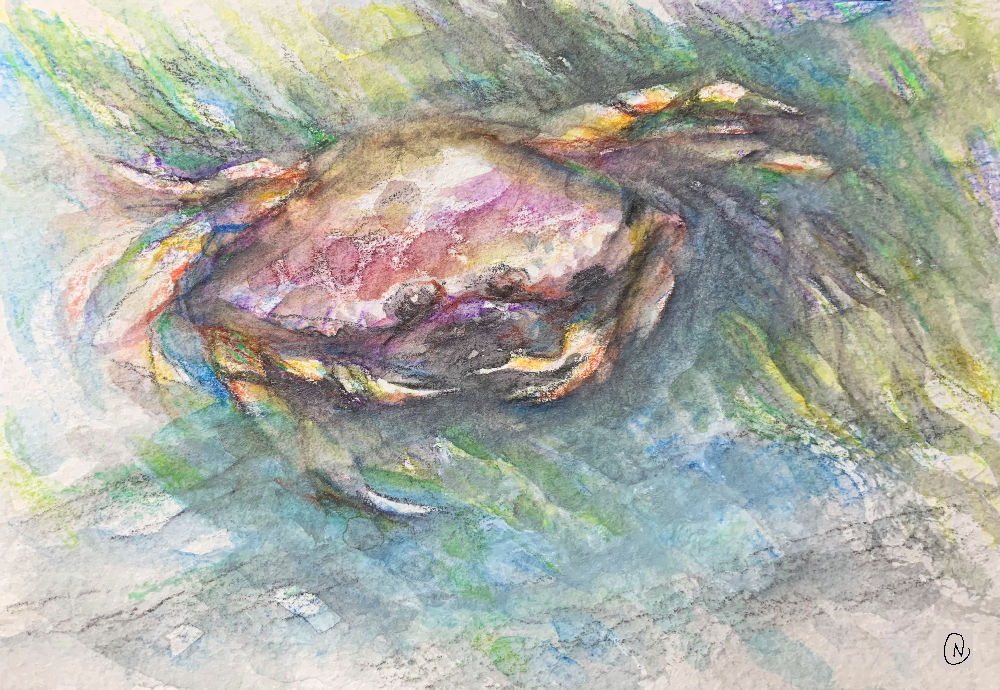
Dungeness Crab, Qualicum Beach, Queen Anne’s Lace at Bexley Bay, New Growth, and Bumble Bee on Birds-foot Trefoil, today’s additions to the 4H x 6W inches watercolor pencils on paper series.
 |
 |
|||
Postcards From The Island
Tuesday, October 10th, 2023
While on holiday here in Campbell River BC, I found a set of 24 watercolor pencils in a second-hand shop for only $2, and a pack of 4 x 6″ watercolor paper postcards for only 50 cents. During the next week (only while I’m here) I plan to paint small sketch-series of local sights.
 |
 |
|||
 |
 |
|||
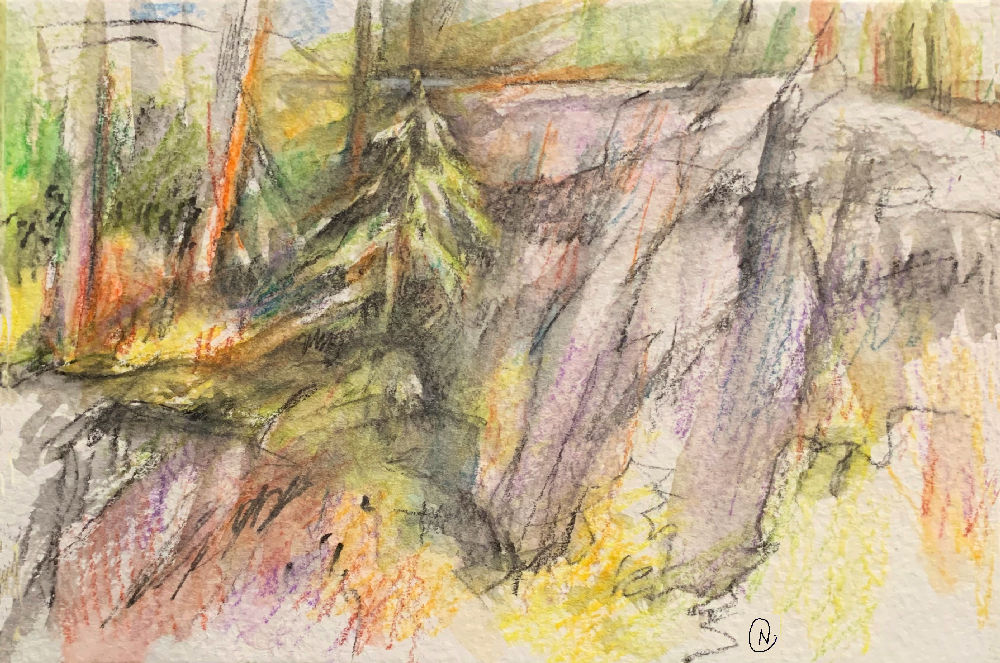 |
 |
|||
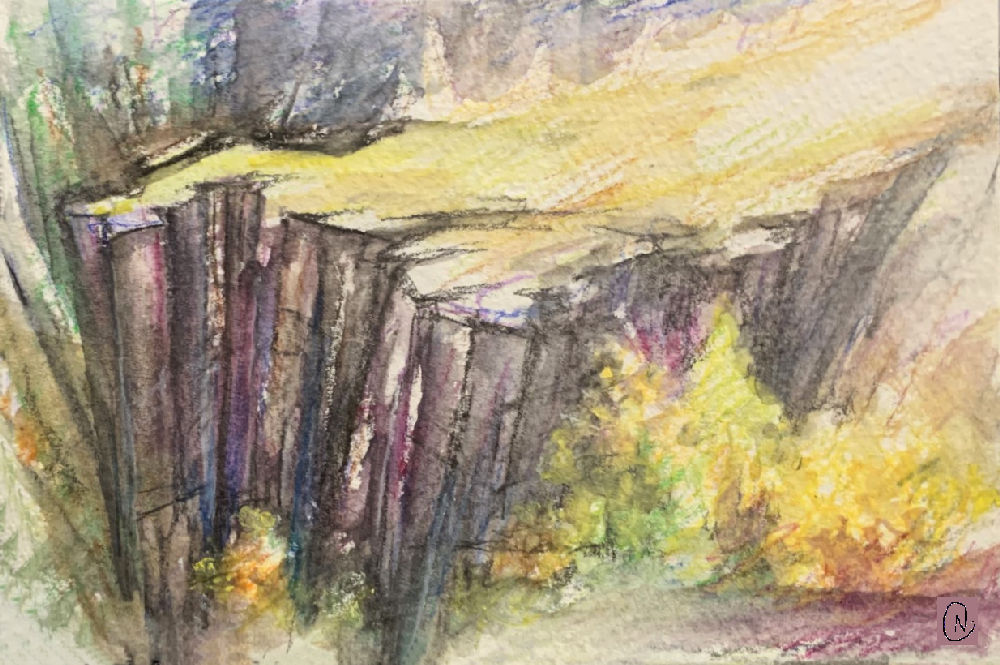 |
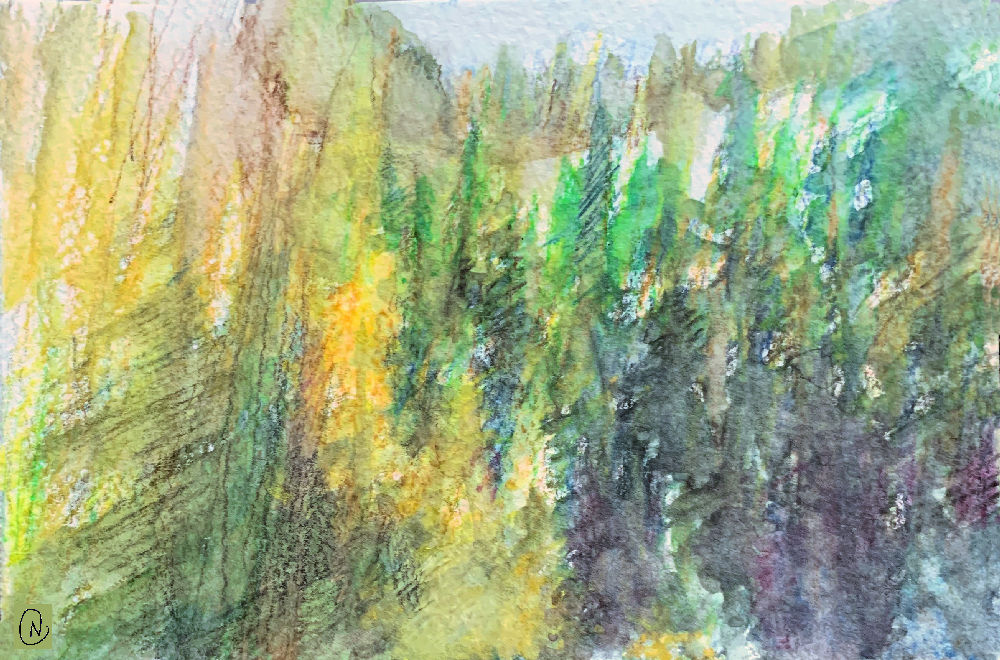 |
|||
Creative Minds 2023
Tuesday, August 15th, 2023

Cycad Leaf Fossil Chair, homage to the history of Earth, 29H x 29W x 29D inches up-cycled plastic vintage chair base, woven canvas strips, layers of plaster gradually cured, sanded and carved. Painted with acrylics, finished with varnish, and waxed to enhance colors. Functional art, very comfortable, durable. Now being showcased at Creative Minds – 2023 exhibition, August 15 – Oct. 15, organized by Exhibizone and powered by @Biafarin platform.
 |
 |
 |
|
 |
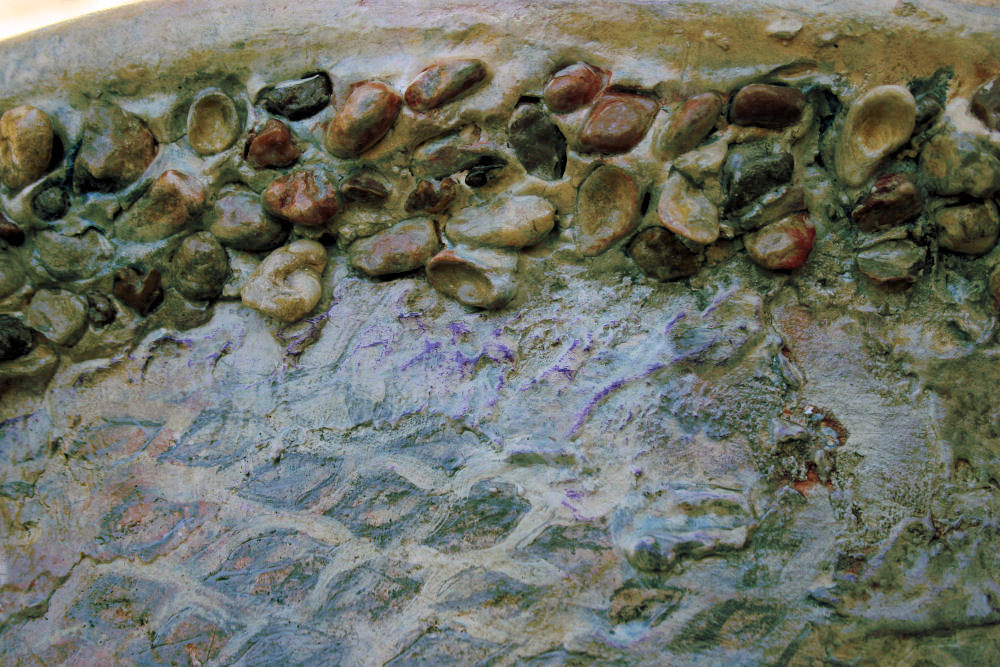 |
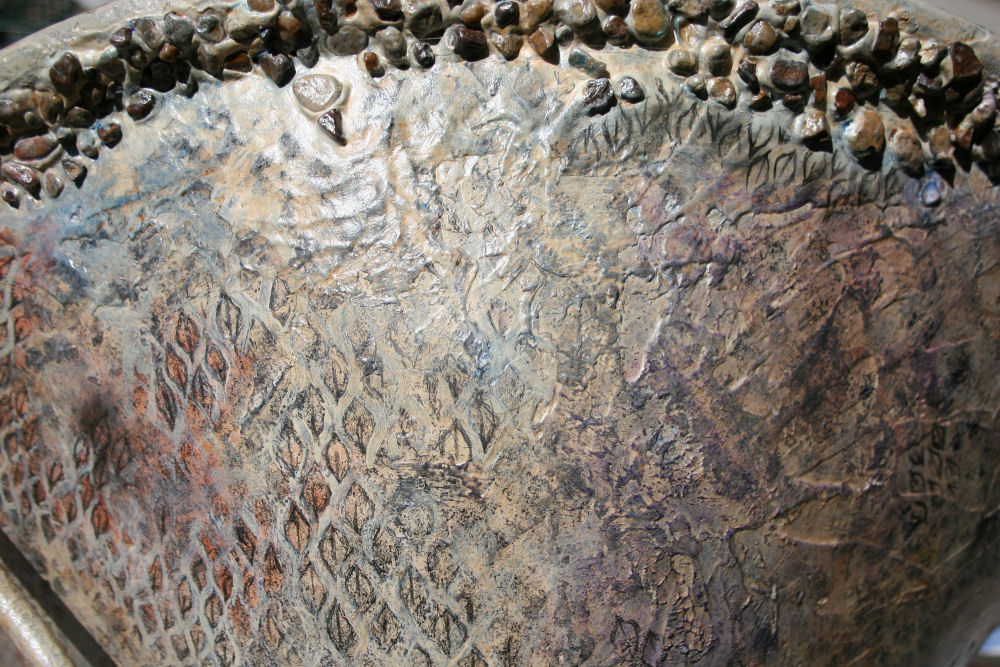 |
|
 |
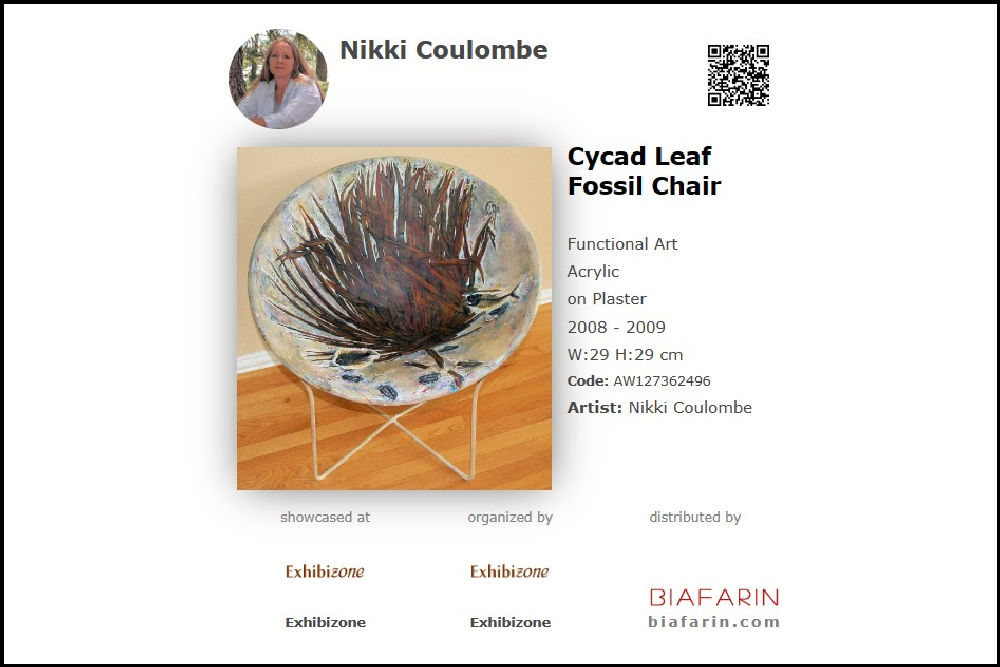 The front of this chair is a rendition of the fossil of a Cycad leaf from the first species of palm-like trees that grew about 50 million years ago. The original Cycad leaf fossil was discovered in a Wyoming riverbed. The circumference on the back of this chair has an informal mosaic embedded with pebbles and authentic fossils of an extinct clam I found in a playground in the Dallas, Texas area. The extinct genus of shells called Myalina are estimated to be 345 – 225 – million years old.
The front of this chair is a rendition of the fossil of a Cycad leaf from the first species of palm-like trees that grew about 50 million years ago. The original Cycad leaf fossil was discovered in a Wyoming riverbed. The circumference on the back of this chair has an informal mosaic embedded with pebbles and authentic fossils of an extinct clam I found in a playground in the Dallas, Texas area. The extinct genus of shells called Myalina are estimated to be 345 – 225 – million years old.
Completing the back of the chair, the surface is textured along with patterns of the bark and leaf scars of a fossilized Paleozoic Lepidodendron, a primitive species of the very first trees on earth, reaching heights of 130 feet (40 m) tall, with leaves that grew flat directly along the bark around 400 million years ago.
Portrait exhibition
Sunday, July 17th, 2022

 Adam, (my youngest son at 3 years old, drawn in 2007) 11H x 14W inches graphite on paper.
Adam, (my youngest son at 3 years old, drawn in 2007) 11H x 14W inches graphite on paper.
Showing online now in the Artist Space Gallery ‘Portraits’ exhibition.
Fins, Feathers and Fur 2020: Cockatiels
Friday, July 17th, 2020
Cockatiels, Jurong Bird Park, Singapore 12H x 9W inches graphite on paper, white double mat and white 18H x 15W inches frame with crackle finish. Check out the Jurong Bird Park website.
Showcased in the J. Mane Gallery’s Fins, Feathers and Fur 2020 exhibition.
Brooke
Friday, July 12th, 2019
Brooke, 11 x 14 inches graphite on paper
The Angel Oak, South Carolina
Saturday, April 14th, 2018
This article and set of photos, initially written in 2008 and updated in 2018, honors the tireless efforts to halt construction on John’s Island, South Carolina that would have encroached on an area of land boasting the Oak tree estimated to be 400 to 500 years old. Thanks to conservation and other local groups like schools and churches, individual donors, pro-bono work from lawyers, a sizable grant, and numerous petitions, we are reassured that persistence does make a difference on this planet. The land surrounding the Angel Oak is no longer in jeopardy. Read more about this amazing tree.
 Charleston, SC is proud of its heritage and respected for its commitment to preserving history in the area, and after many years, residents were finally victorious over plans that would have cut down nearby trees and forest in favor of land development.
Charleston, SC is proud of its heritage and respected for its commitment to preserving history in the area, and after many years, residents were finally victorious over plans that would have cut down nearby trees and forest in favor of land development.
 In one 2008 online petition there were hundreds of pages of interesting comments and pleas from residents who have fond memories of climbing the branches as children, plus exclamations written by tourists – national and international – who have visited the area specifically to see the Angel Oak. The tree is so significant to locals, a nearby elementary school carries its name. Picnics, weddings and reunions are held in the Angel Oak Park, including an annual summer Arts event, “Evening under Angel Oak” featuring live music, drama and other activities.
In one 2008 online petition there were hundreds of pages of interesting comments and pleas from residents who have fond memories of climbing the branches as children, plus exclamations written by tourists – national and international – who have visited the area specifically to see the Angel Oak. The tree is so significant to locals, a nearby elementary school carries its name. Picnics, weddings and reunions are held in the Angel Oak Park, including an annual summer Arts event, “Evening under Angel Oak” featuring live music, drama and other activities.
 During August, 2008 my husband and I drove through South Carolina and took a short detour to John’s Island. We drove through wicked rains at the edge of Tropical storm Faye, so when we arrived at Angel Oak Park no one else was there. Although the light was not ideal, fortunately rain subsided long enough to take photos.
During August, 2008 my husband and I drove through South Carolina and took a short detour to John’s Island. We drove through wicked rains at the edge of Tropical storm Faye, so when we arrived at Angel Oak Park no one else was there. Although the light was not ideal, fortunately rain subsided long enough to take photos.
This is one impressive tree! The trunk and lower branches are so immense, they have been propped up with stakes and heavy cables here and there, which is a little intrusive when taking photos, but obviously necessary. Growth is spread outward more than upward. No wonder it is considered sacred by the locals… there is an appreciable presence felt while standing silently under its canopy, which apparently occupies 2,000 yards of space above.
 It occurred to me that this tree has lived through one serious chunk of history, and I wondered what was happening on our planet when it was knee-high to an acorn? The Angel Oak’s parent-tree and surrounding forest flourishes for eons before one special acorn falls from one of the magnificent Oaks on the southeastern shores of a land only known to the indigenous peoples then. The acorn sprouts along with many others, but this one will outlive the rest, seasoning hurricanes, climate changes, human encroachment and wars.
It occurred to me that this tree has lived through one serious chunk of history, and I wondered what was happening on our planet when it was knee-high to an acorn? The Angel Oak’s parent-tree and surrounding forest flourishes for eons before one special acorn falls from one of the magnificent Oaks on the southeastern shores of a land only known to the indigenous peoples then. The acorn sprouts along with many others, but this one will outlive the rest, seasoning hurricanes, climate changes, human encroachment and wars.
 Much of what we are familiar with; our collective modern identity has been shaped by the events and people who lived and died since the Angel Oak established its first roots in the earth. If trees could talk…!
Much of what we are familiar with; our collective modern identity has been shaped by the events and people who lived and died since the Angel Oak established its first roots in the earth. If trees could talk…!
The Angel Oak does not exist on its own. It depends on the surrounding forest, so any deliberate disturbance in the immediate soil or neighboring properties would disrupt its far-reaching and delicate root system. Thankfully, now the tree will remain host to a myriad of life forms, supporting an abundant, specialized ecosystem of mosses, fungi and fern varieties, insects and amphibians – hopefully for five hundred more years. The Angel oak lives on as one of the true jewels on this planet.
While older, poorer quality photos are still gradually being replaced, the Majesty of Trees / Dancing with Trees exhibition website is now updated. Check it out!
« Previous Entries


